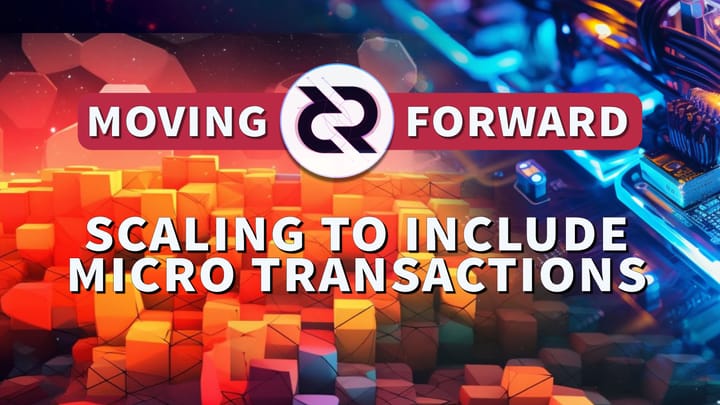Taproot Assets lets you build and exchange many different types of digital goods using the Bitcoin network. These could be anything from digital artwork to a virtual trading card to tokens of a company's shares of stock.
Bitcoin's path as a pioneering crypto has mainly revolved around enabling monetary transactions without a middleman. However, as the industry evolves, new tools appear to extend the utility of Bitcoin. One of those extensions is the introduction of Taproot Assets. Formerly known as Taro, this protocol uses Bitcoin's Taproot technology and works with the Lightning Network to facilitate creating and managing digital assets on the Bitcoin blockchain. This innovation creates utilities for Bitcoin that go beyond monetary transactions, implementing robust security and enhanced privacy features, united with speed, scalability, and Lightning Network low fees.
Taproot Assets enables blockchain support for various digital assets, from alternative currencies and tokens to unique digital collectibles. By utilizing Taproot, these assets benefit from greater transaction efficiency while maintaining high security. In conjunction with the Lightning Network, Taproot assets ensure that transactions are fast and cost-effective, allowing for frequent and small transactions. This article examines the Taproot Assets protocol, its integration with the Lightning Network, the technical mechanisms it uses, and its potential applications in various sectors. Could this protocol also benefit Decred? Let's find out!
Understanding Taproot Assets
Taproot Assets lets you build and exchange many different types of digital goods using the Bitcoin network. These could be anything from digital artwork to a virtual trading card to tokens of a company's shares of stock.
Taproot Assets cleverly utilizes Bitcoin's Taproot technology and integrates seamlessly with regular Bitcoin transactions. This makes it difficult for anyone looking at the Bitcoin blockchain to distinguish Taproot Assets transactions from regular transactions.
Key Features of Taproot Assets Protocol:
Integration with Bitcoin's Taproot: Taproot Assets utilizes the Taproot script tree to commit to arbitrary non-script data. This integration ensures that transactions involving Taproot Assets remain indistinguishable from regular Bitcoin transactions to observers not directly involved in the asset transactions.
Efficient Data Structures: The protocol uses Merkle-Sum Sparse Merkle Trees (MS-SMT) for efficient and secure asset management. This structure supports operations like proving the existence and size of assets and proving non-existence without revealing all data.
Lower Costs and Faster Transactions: Bitcoin transactions are getting increasingly expensive, especially when the network is busy. But with Taproot Assets, you can use the Lightning Network (LN), which lets you transact quickly and cheaply. Using the Lightning Network is like having an express lane that bypasses the usual traffic, saving you time and money, especially for small or frequent transactions.
Asset and Provenance Verification: Asset transfers and their provenance can be verified through structured metadata and Merkle proofs, either via flat files known as "full proofs" or through a structured system called a "Universe," which is a more complex MS-SMT tracking on-chain asset movements and commitments.
Off-chain Scalability: Taproot Assets can be transferred off-chain using Lightning channels, which support both single-hop and multi-hop transfers. This is crucial for scalability, allowing the system to handle a higher volume of transactions without bloating the Bitcoin blockchain.
Support for Various Asset Types: The protocol supports different assets, from divisible standard assets to non-divisible collectibles. Each type of asset can have unique rules and structures for issuance, transfer, and management.
Proof of Reserves/Supply: Using the MS-SMT structure, the protocol can efficiently prove the total amount of any asset and ensure that assets don't get inflated beyond their initial issuance parameters.
Video from Lightning labs presenting Taproot Assets
Potential Use Cases:
Digital Collectibles: Similar to NFTs, Taproot Assets can represent unique digital collectibles on the Bitcoin blockchain.
Financial Instruments: Stocks, bonds, or other financial products could be issued and managed as Taproot Assets, leveraging Bitcoin's security and network.
Gaming Assets: Items or currencies in online games could be issued as assets, allowing for secure, verifiable player transfers.
At the core of Taproot Assets are some key technological implementations:
Merkle-Sum Sparse Merkle Trees (MS-SMT)
A Merkle Tree is like a family tree for files or data, summarizing them all with a single top code called the root hash. This makes verifying the file's authenticity easy without needing to check everything. Merkle-Sum Tree is a twist on this, where each step in combining the data (like each family tree merge) also considers the total size of files. This is helpful not only to confirm a file's existence but also to verify its size.
However, the Merkle-Sum Tree struggles to prove that something does not exist unless everything is sorted. If things are in order, it's easier to show something's missing, but adding or changing data can mess up this order.
Sparse Merkle Tree (SMT) simplifies things by imagining a gigantic tree with potential spots for all possible data entries. This tree is massive but manageable through smart shortcuts, like knowing what an empty spot looks like, making the whole system efficient.
Combining these, the Merkle-Sum Sparse Merkle Tree (MS-SMT) tracks data and sums, helping efficiently manage and verify large data collections, like assets in a blockchain, including their size and existence (or absence).

Taproot Assets Protocol
The Taproot Assets Protocol uses the Bitcoin blockchain to handle digital items without cluttering the main system. It works atop the existing Bitcoin system using a specialized overlay. Assets in this system are stored in trees made up of MS-SMTs, each corresponding to a different asset type.
Each piece of an asset also includes a script, a set of rules on how that asset can be moved or transferred. Assets are like unique or divisible digital tokens, managed through scripts similar to Bitcoin's transaction rules. This setup allows for asset transfers to be securely and programmatically identical to transferring money in Bitcoin for specific assets.
Asset Provenance and Management
Provenance or the history of each asset is crucial, especially to verify legal transfers and ownership. It can be tracked through the following:
Full Proof: A file showing all transfers and ownership changes from the asset's creation.
Universe System: An MS-SMT records all transfers of an asset, which helps verify its current and past ownership without needing every detail from the beginning.
Proof of Reserves: MS-SMTs also enable proof of reserves, i.e., confirmation of the total number of assets or tokens without revealing individual details. This is important to prove that no additional tokens have been secretly produced and that the asset's value remains preserved.
Splits, Merges, and Collectibles
Standard Assets can be split or merged (like breaking a dollar into change or putting coins together). Each transaction or split gets tracked to prevent making up new assets out of thin air.
Collectibles, like limited edition items, don't split. They're often traded as single units on the blockchain directly or within secure, closed groups.
Taproot Assets disadvantages
Taproot Assets adds several improvements to the concept of asset management on the Bitcoin blockchain, but it also implies certain drawbacks that users and developers should consider.
First, most of the operations with data in Taproot Assets are performed outside the blockchain environment, meaning that clients are primarily on their own regarding data security. This setup is similar to the Lightning Network, which depends more on client-side validation. Although this method saves space on the Bitcoin blockchain and improves the privacy and speed of transactions, it transfers data management and protection to the user's shoulders. For those who do not want to manage your data alone, you can use Taproot Assets as a "Universe" indexer or database. This is safer as it adds an extra layer of reliance on these third-party providers for data accuracy and accessibility.
Secondly, Taproot Assets are engaged in a somewhat restrained sphere of smart contracts. For Layer 2 solutions, the system is connected to the Lightning Network, where more focus is placed on speed and cost than on the full functionality experienced on other smart contract platforms. This limitation implies that Taproot Assets may not be ideal for working on complicated decentralized finance (DeFi) applications that would need the full capabilities that are conventionally expected to come with enhanced smart contract platforms. This could, in turn, potentially limit the kinds of financial applications and innovations that can be built and implemented using Taproot Assets.
Could it work for Decred?
It is improbable that Decred will include Taproot Assets in its blockchain environment and governance model since the latter has a quite different structure and organization. The idea is quite inspiring for further improvements and development of the Decred system. Here's how Decred could draw from Taproot Assets to introduce similar benefits within its ecosystem:
Diverse Asset Representation: Building on the idea of Taproot Assets, Decred might also create a separate infrastructure for even more various assets, such as tokens and NFTs. This would attract developers and enterprises interested in developing and managing their unique tokens within Decred, enhancing the platform's versatility.
Exclusive Asset Issuance: Adopting specific lessons from Taproot Assets, Decred can enable the creation of exclusive assets that would be offered through its highly secure and efficient blockchain. This could include specialized tokens such as membership or access tokens that provide unique benefits and exclusivity secured by blockchain technology.
Complex Ownership Structures: Based on Taproot Assets' experience, Decred could implement mechanisms for managing complex asset structures, such as fractional ownership or multi-signature arrangements. This expansion would cater to high-value assets and collective governance projects, broadening Decred's utility in collaborative enterprises.

Moving Forward
Taproot Assets is an exciting protocol that has been developed to extend the utility of blockchain. Digital assets will become more common and desired, and Taproot Assets ensures that the Bitcoin blockchain follows this trend.
Should Decred develop a similar protocol for digital assets? Leave your comment below.
Source:







Comments ()